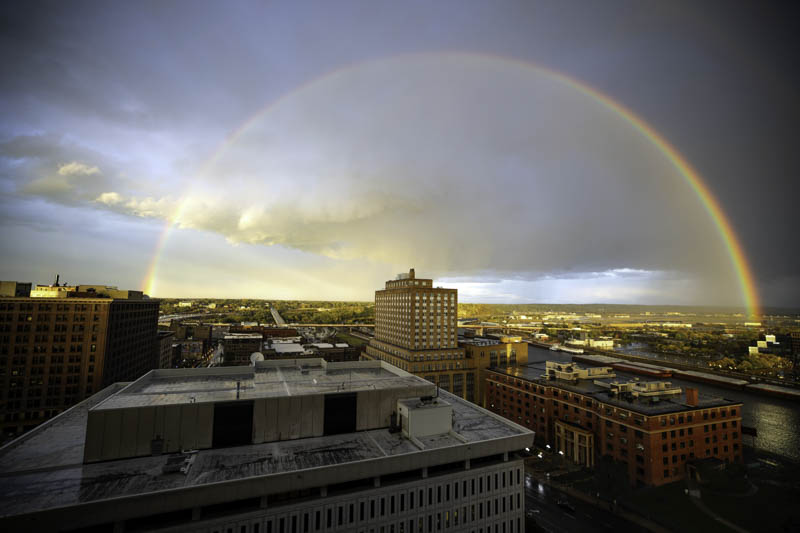Home » Cost Guides » Minnesota Cost Guides » How Much Does it Cost to Build a House in Saint Paul?
Saint Paul is the state capital city of Minnesota and the second-most populous city in the state. The city sits just across the city of Minneapolis and together forms the well-known “Twin Cities” of the midwest. It is also strategically located along the banks of the Mississippi River, the second-longest river in North America, in conjunction with the Minnesota River. This quickly made Saint Paul into a transportation hub in the 1850s. The city was dubbed “The Last City of the East” as it was the last good landing point for riverboats.
Today, Saint Paul is a regional business hub and is among the top cities with a free business environment. Aside from numerous job opportunities, the city also offers a great quality of life with high ratings for healthcare, environmental quality, leisure, and culture. Additionally, Saint Paul ranks second, behind Boston, in terms of higher education institutions per population in the country. This makes the city popular to almost anyone, from career-focused individuals to growing families.
The Cost of Building a Home in Saint Paul
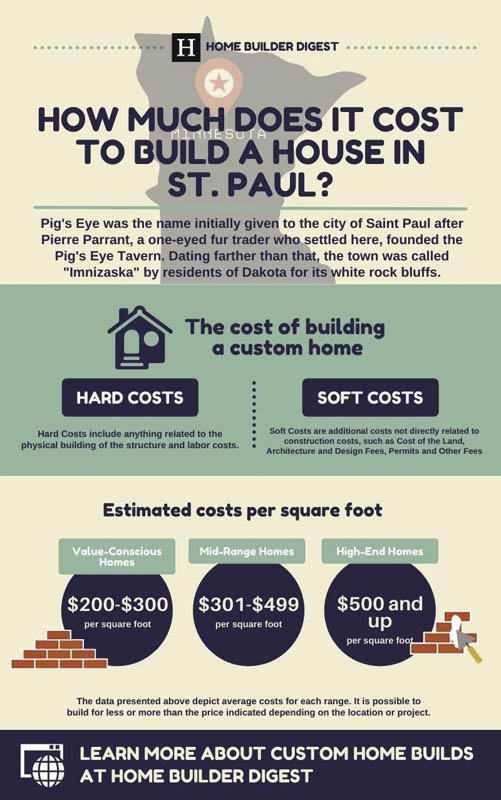
Purchasing a home is fairly common in the country. Unfortunately, the housing inventory has been at an all-time low since the COVID-19 pandemic. Although the property market in St. Paul is currently a sellers’ market, finding a home has grown difficult. Bidding wars are a common occurrence in the city, and home values are steadily rising, almost costing as much as homebuilding. As a result, many people choose to build new homes and personalize them however they want.
The national average cost of building a single family home is roughly $300,000, according to the National Association of Home Builders (NAHB). The U.S. Census Bureau gave a higher estimate, with newly constructed homes costing around $500,000. Home prices generally range from $100 to $200 per square foot for budget-conscious and mid-range project owners, while luxury homes cost more. It costs between $200 to $300 per square foot, with prices varying depending on the size, location, complexity, personalization, and quality of finish.
As for the home building costs in St. Paul, prices usually range between $200 to $500 per square foot, sometimes more. Value-conscious homes cost $200 to $300 per square foot, and mid-range homes cost $301 to $500 per square foot. High-end homes cost the most as often these are built with the highest quality of materials and the greatest customization done. These homes cost $501 per square foot and up depending on numerous factors, including those mentioned above.
The figures provided above are merely estimates and do not represent the actual cost of building a home in St. Paul. Aside from the ones specified above, the total value will be determined by various aspects. These factors are divided into two types: hard and soft costs.
Hard Costs
The term “hard costs” refers to all of the fees associated with the actual construction of the home. Materials used, labor fees, additional amenities, and landscaping are examples of these.
The average cost for building a custom home in St. Paul is $350 per square foot — about $875,000 for a 2,500-square-foot home. Initially, home building rates in the city suggest a range between $110 per square foot to $240 per square foot, but due to the increasing material prices and Minnesota’s regulatory process, these rates have gone up even before the pandemic. Today, home rates have increased even further due to pandemic-related construction industry issues, such as supply chain issues and the lack of labor workforce.
To further give context to the estimated building costs, listed below is the price breakdown of each construction work:
- Site Work and Land Preparation: $30,000 to $70,000
- Foundation Work: $40,000 to $90,000
- Framing: $250 to $600,000
- Interior Finishes: $350,000 to $1,000,000
- Exterior Finishes: $100,000 to $500,000
- Major Systems (Plumbing, Electrical, Heating, Ventilation, and Air Conditioning): $90,000 to $200,000
Materials:
- Lumber: $1,300 per thousand board feet
- Copper: $9,000 to $15,000
- Concrete: $4 to $6 per square foot
- Siding: $12 per square foot
- Drywall: $15,500
- Insulation: $5,250
Labor fees, as per ZipRecruiter:
- Framing Contractor: $30 per hour
- Construction Project Manager: $35 per hour
- Construction Laborer: $15 per hour
- Roofing Laborer: $15 per hour
- Electrician: $26 per hour
- Plumber: $23 per hour
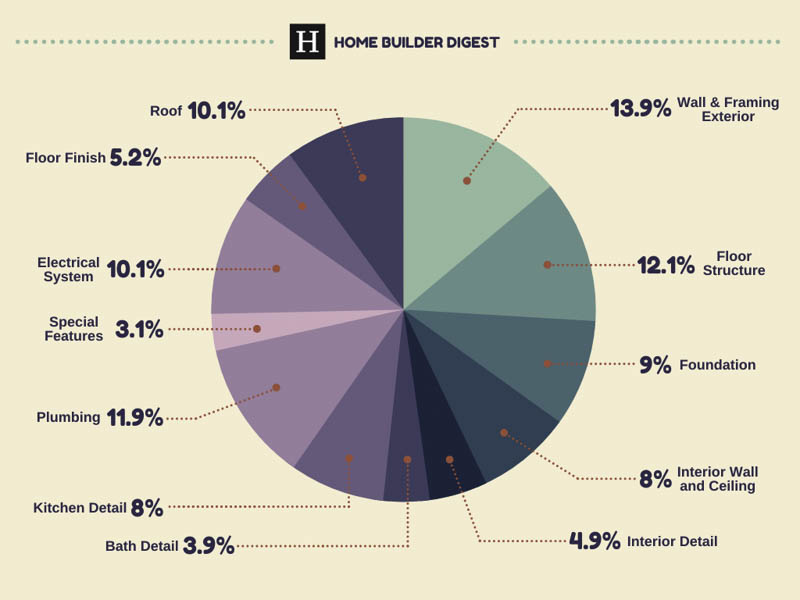
Figure 1. Typical cost breakdown of a single-family home constructed using the conventional method, according to Home Builder Digest.
Soft Costs
Architectural design, site development fees, building permit fees, engineering fees, and other expenses are examples of soft costs that go beyond the actual construction of the property.
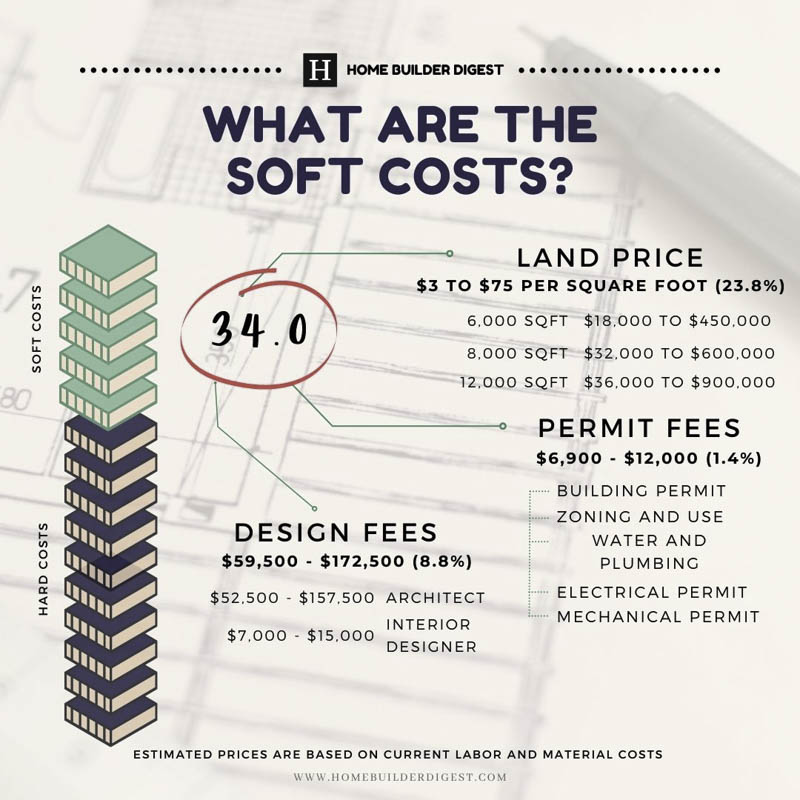
Figure 2. Soft cost percentage and average price range of additional fees, determined from the overall cost of custom home building in St. Paul.
Cost of the Land
As previously mentioned, home prices also vary depending on location, with rural regions having lower land prices than urban and suburban states. Minnesota is reportedly one of the cheapest states to acquire land in, with some areas costing between $5,000 to $8,000 per acre on average. Although Minnesota is fairly low-cost, the land cost in St. Paul tends to be more expensive than in other zones as it is a major city in the state. Prices may range from $50,000 to $1,000,000 and beyond.
According to recent listings on the real estate website Redfin, the average land size available in St. Paul is 7,570 square feet or about 0.17 acres. The average listing price is approximately $210,000, or around $21 per square foot. The cheapest listing costs $19,000 for a 6,969-square-foot land — around $3 per square foot — located on the West Side. On the other hand, the most expensive listing costs $525,000 for a 6,969-square-foot land — around $75 per square foot — located in the Highland neighborhood.
The minimum lot size required depends on the density of the property’s location. The city’s Dimensional Standard for Residential Zoning Districts states that single family homes should have at least 5,000 square feet to 9,600 square feet of land per unit. Following this regulation, land acquisition in St. Paul will cost approximately $105,000 to $205,000.
Permits and Other Fees
According to the City of St. Paul’s Permit Fee Schedule, the building permit fee is determined based on the total construction cost. The respective fee for each valuation is as follows:
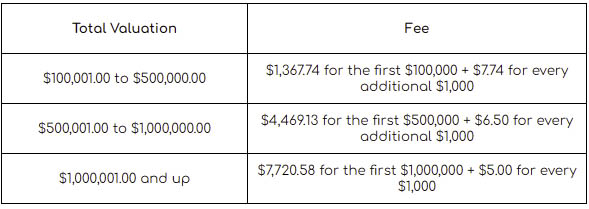
Every building plan submitted will be subjected to review by the board to determine if the structure adheres to the regulations set in the municipality. There is a corresponding fee: the plan check fee costs 65% of the permit fee calculated from the table above if the valuation is above $1,000. Additionally, a state surcharge is also implemented for every permit issued. It costs $0.50 for projects with a valuation of $1.00 to $1,000.00. For projects valued at $1,001.00 to $1,000,000, the surcharge is $0.0005 multiplied by the total job value. For projects $1,000,001.00 and above, the surcharge computation is available on Minnesota’s Office of the Revisor of Statutes.
Using the estimated figures in the hard costs, building a 2,500-square-foot home will cost $875,000 to build. The total building permit fee for this project will cost around $11,850, including the plan check fee and state surcharge.
Architecture and Design Fees
Architects and designers typically price their services using a percentage rate. They usually charge between 6% and 18% of the project’s total construction costs. Lower-end projects usually range from 6 to 9%, depending on the workload, complexity, customization, and the size of the residence. This rate may increase to 8 to 18% of the total building cost for higher-end projects, which may sometimes include interior designing services.
Suppose it will cost $875,000 to build a 2,500-square-foot home in St. Paul. The total architecture fee for a new single-family home will be $52,500 to $157,500. This estimate is based on a mutually agreed-upon scope of work between the client and the architect. Any additional tasks will be invoiced separately, typically on an hourly basis, and added to the overall design fees. The hourly rate for architects serving St. Paul ranges between $125 to $300 per hour.
How do Saint Paul’s custom home building and buying costs compare to nearby cities?
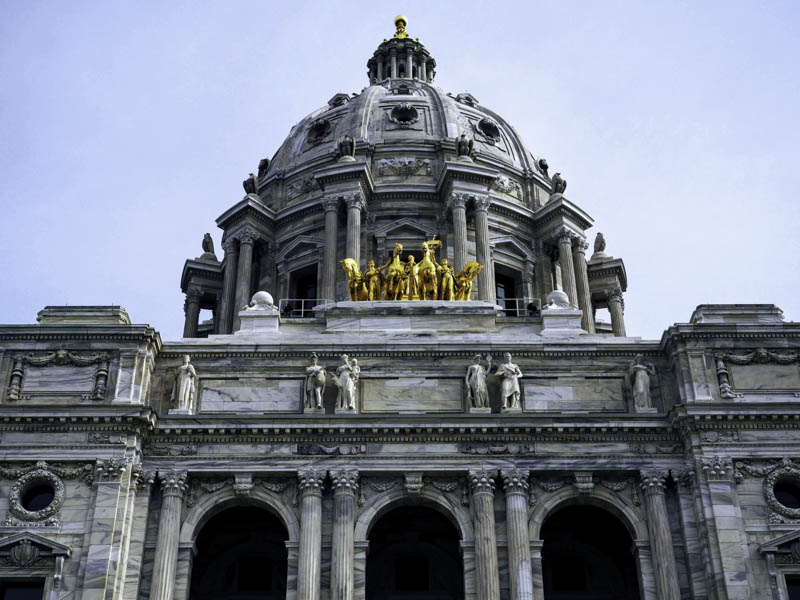
The midwestern region is one of the least expensive areas to build a house in the U.S. With an estimated budget of roughly $300,000, aspiring homeowners can construct a 2,500-square-foot home — about $115 per square foot. Although Minnesota is situated in this region, the state ranks first as the most expensive state to build and buy a home in the region, with a median price of around $190 per square foot.
Over the years, home building, buying, and home values have drastically increased. Single family homes in Minneapolis-St. Paul-Bloomington Metro Area is currently valued at $405,000, a 24.3% increase from February 2020’s $325,000. As for the area’s home building costs, BuildZoom (BZ) reported that recent bids range from $130 to $330 per square foot.
Compared to its nearby cities in terms of recent home builds, the city of St. Paul is relatively the same as its twin city Minneapolis. As per BZ, the average job value of new home construction in Minneapolis costs almost $500,000. The city of Roseville has a lower average compared to the Twin Cities, with a median job value of $400,000. White Bear Lake has the highest average job value, with new home projects costing an average of $800,000.
What Leading Custom Home Builders and Architects that Serve the Saint Paul Area Say
Written below are insights shared by home builders and architects who serve St. Paul. These refer to the city’s current challenges and trends while also providing more information on the construction industry and housing market.
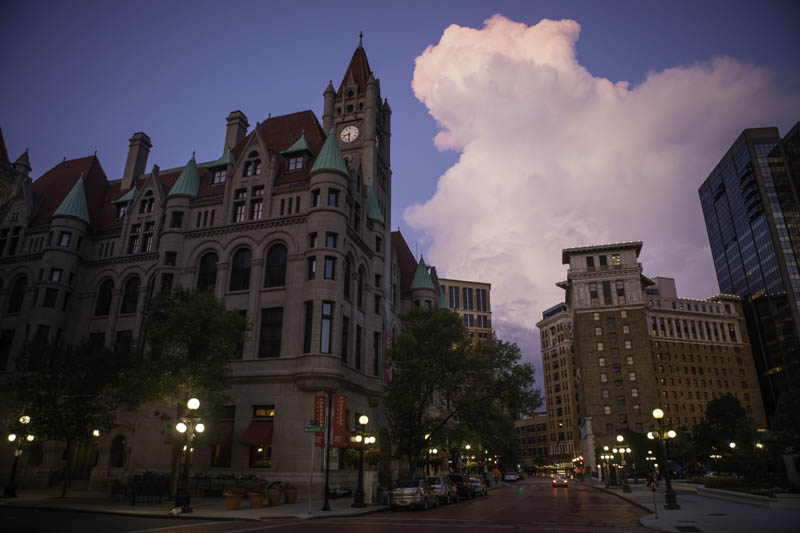
Amy Hendel, principal of Hendel Homes, expressed that some of their firm’s current challenges are supply chain issues and starting home construction. Most projects typically linger on architecture planning. During this phase, building prices tend to quickly increase, and project owners are forced to redraw plans to keep them within budget. Hendel reported that the current construction costs have already increased by 20% and may still rise. She explained that it is difficult to compare the prices of previous builds to current ones because prices remain unstable. Estimates can still either increase or decrease. Hendel added that securing subcontractors, specifically framers, contractors, and concrete workers — must be one of the priorities. They are often overworked and have too much on their plate forcing the team to spread to accommodate projects. Smaller teams working on projects have resulted in an average of two extra months in scheduling from start to finish.
Sustainable 9 Design + Build noted that the construction industry will still experience supply chain-related challenges in the next two years. Material cost and its availability are among the most prominent issues in the trade. They advised project owners to form partnerships with firms that have excellent relationships with their suppliers and subcontractors to minimize price inflation.
The Future of Saint Paul’s Residential Construction Industry
Like any other city in the country, St. Paul experienced challenges in terms of the city’s housing market and residential construction industry. As the economy recovers and housing interests peak, home building and buying prices are soaring buoyed by uncontrollable demand, low market inventory, and supply chain issues. Rent prices were also affected by this. The local government was pushed to implement rent control policies: rent hikes for all of the city’s 65,000 rented residences are capped at 3% each year. Although this new policy protects renters, it doesn’t take into account new housing construction, and no exceptions have been made for these projects. Shane Philipps, author of a U.S. housing book called “The Affordable City,” explained that “It’s important to clarify that when I say [rent control] shouldn’t apply to new housing, that doesn’t mean that a home built in 2021 will never be rent-stabilized. It just means not having rent stabilization for 15-20 years to make sure the developer has an opportunity to earn a profit, so that people building now, and even more importantly people who might consider building in the future, will continue to build housing.” The issue with the new policy has become evident as multifamily building permits decreased by over 80% a few months after its passage.
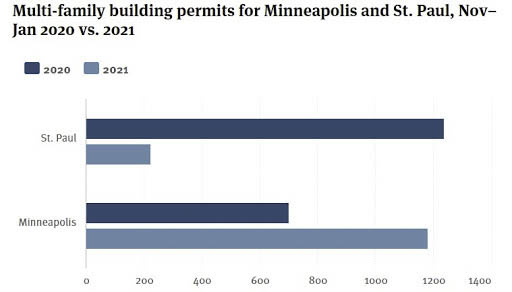
Figure 3. The total number of multifamily housing permits issued in Minneapolis and St. Paul for November to December 2020 vs. 2021, as per the U.S. Department of Housing and Urban Development.
Professionals in the city’s housing sector blamed the new policy for the decline as investors are walking away and refuse to finance the projects. They view the rent inflexibility as an increasing risk. Fortunately, St. Paul’s city Mayor, Melvin Carter, is looking into the said policy and is proposing to make necessary amendments: provide a 15-year window for new construction or residential conversions. If this new exemption is approved, the city of St. Paul should see a steady housing construction rebound within one to two years. This would be a great help in solving the lack of housing supply as thousands of housing units currently on pause will resume. Mayor Carter also noted that the city is working on a $74 million project to launch 1,000 new deeply-affordable housing units located in Ramsey County.
Considering building a home in Saint Paul?
Contact us for a free consultation

